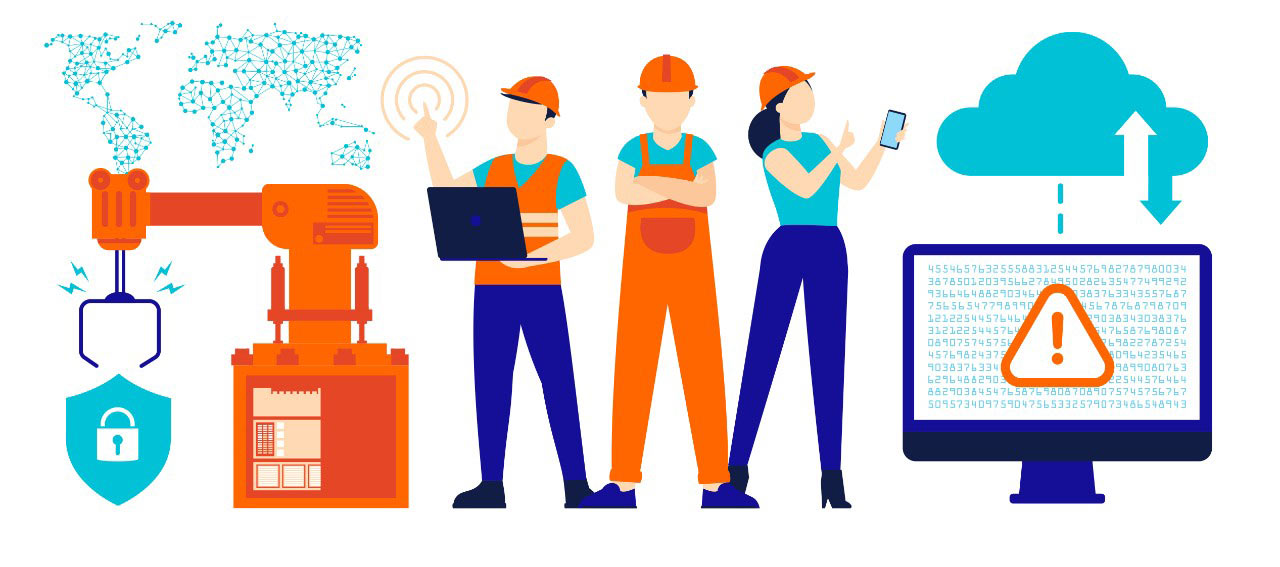How manufacturers in Singapore can future-proof their businesses: An internal perspective

The truth is, no business can be completely future-proof in a world of continuous changes.
However, if you look inward and consider a few key questions as well as their implications, it could mean the difference between thriving or failing in an increasingly diverse future. Because you don’t just want to keep the lights on; you want to get a good handle on internal risks and hedge against a future complicated by dynamic shifts.

-
Think about the technologies that have already been implemented within your company. Do you fully understand the potential vulnerabilities?
Chances are, most of you have heard about various forms of cyber-attack from news coverage, but have you truly considered what they are and how they could affect your business?
Understanding key cyber security terms is an important first step towards keeping your business cyber-safe. Only then you’d be able to examine the technology you’re using or developing, find out potential gaps and vulnerabilities and mitigate those risks before an incident occurs.
For instance, make sure manufacturing systems that rely on technology used for day-to-day operations have dedicated cyber security control mechanisms in place to prevent intentional sabotage as well as accidental mistakes by employees or trusted third party vendors.

-
Do you adopt risk-based decision-making in the development of new products and services?
Are you satisfied with your current decision-making process when it comes to the development of new offerings? Do the teams incorporate risk considerations or are they simply focused on executing strategies that bring in the most revenue?
Far too often, businesses do not go through rigorous risk assessment when designing new products and implementing new services. However, you can better future-proof your business if you start thinking about risk possibilities while keeping an eye on revenues and profits. You’ll be surprised how much money you can save by addressing a product design flaw in the early design stages, as opposed to after the product is manufactured, shipped and delivered to customers. -
What is your organisation’s weakest link that may hinder its move towards smarter, better, faster and safer operations?
Human capital may be your company’s most valuable asset, but without effective protection in place, it could also be your weakest link. In fact, employees are often one of the most overlooked aspects of risk.
For example, cyber security risks may increase when employees are working in new ways, using unfamiliar software and online platforms. You could limit the risk of a security breach by implementing strong cyber security practices and clear work-from-home policies when operating with a remote workforce.
New ways of working may also involve changes in employee duties, which could impact work injury compensation insurance needs. Be sure to discuss any workforce changes with your insurance agent or broker so you can make necessary adjustments to your policies.

-
Does your business take a proactive or reactive approach when it comes to managing internal exposures?
It’s not about whether disruptions might happen, it’s about when. While proactive risk management can’t prevent all interruptions, when done right, it helps to minimise the impact and enables you to pivot quickly as well as stay resilient in times of need.
Here are a few basic but crucial manufacturing risk management tips:- Integrate risk mitigation practices with your strategic planning process by putting a robust risk management program and business continuity plan (BCP) in place. If you don’t currently have one, here are 5 steps to creating a BCP. If you do, be sure to routinely review, update, and adjust the plan based on changes to your business operations.
- Adhere to engineering, regulatory, and safety best practices to minimise any exposures associated with the shut down and start-up of manufacturing processes.
- Conduct regular self-inspection of hazards and maintain appropriate documentation of required actions being completed and other procedural changes made.
- If there are any special hazards (e.g. use of organic peroxides, flammable liquids usage, dust exposure), details of the precautions to be taken and special training requirements should be documented.
-
Is your company structured to weather another global crisis?
Your business model and operations are changing, so should your business protection strategies.
As you embrace advanced technologies, have you considered exposures such as property damage and bodily injury that can occur in new ways?
As you develop new offerings, do you examine the threats and liabilities inherent to what and how it is being manufactured?
As you optimise your operations, are you confident that your current insurance coverage is adequately protecting your company and can it help you effectively weather internal storms when the next big crisis hits?
The future is unpredictable, but asking these critical questions will prepare you for the multi-faceted risks manufacturers like you might encounter. You may not have clear answers now. When you do, you can run your business with confidence, knowing that you’re making great strides toward future-proofing your business.
Not sure how to get a head start in assessing and/or managing existing and emerging threats specific to your organisation? Speak to your insurance broker/agent or our risk experts to ensure you are prepared and ready for any eventuality.
Top-of-mind challenges for Singapore's manufacturers
The multi-faceted risks faced by local manufacturing companies can play into their financials and impact daily operations. Learn more about this increasingly diverse set of internal and external risks, and what it means for manufacturers.


No part of this article may be reproduced in any written, electronic, recording, or printed form without written permission of Chubb.
Disclaimer - The content of the above article is not intended to constitute professional advice. Although all content is believed to be accurate, Chubb Insurance Singapore Limited (Chubb) makes no warranty or guarantee about the accuracy, completeness, or adequacy of the content of this article. Users relying on any content do so at their own risk.

Have a question or need a quote?
Leave your contact details and our representatives will get in touch with you.